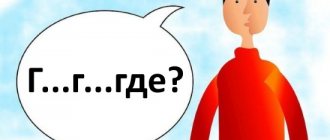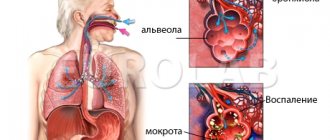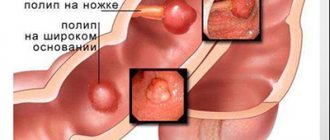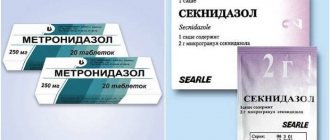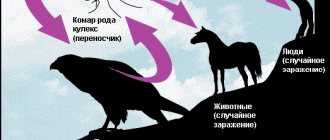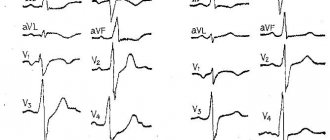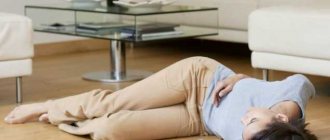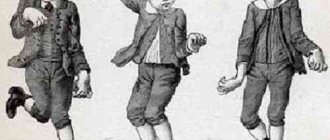Vascular pathologies of the brain are common conditions, and acute circulatory disorders occupy an important place among them. Most often they occur due to diseases of the cardiovascular system, less often they are associated with blood diseases and other diseases.
Our expert in this field:
Tafintseva Ekaterina Anatolevna
Head of hospital, general practitioner
Call the doctor
The following main types of circulatory disorders in the vessels of the brain are distinguished:
- acute hypertensive encephalopathy;
- transient cerebrovascular accident;
- ischemic stroke;
- hemorrhagic stroke;
- phlebothrombosis of cerebral veins;
- phlebitis of the cerebral veins.
Causes
The cerebral blood supply is anatomically complex. Oxygen, along with other vital elements, is delivered to the tissues by the main and internal arteries. For the brain to function stably, it needs a quarter of the oxygen entering the body. The causes of circulatory disorders lie in:
- Vascular atherosclerosis, which often develops in elderly people and patients with problems with the cardiovascular system. Sclerotic plaques form in the arteries, obstructing blood circulation.
- Hypertension, characterized by changes in blood pressure. Due to regular surges, the walls of blood vessels suffer, which disrupts the blood circulation process.
- Stress, overwork, sedentary work, curvature, and spinal column injuries lead to deterioration of cerebral circulation (CBF).
- Traumatic brain injuries, surgical intervention in the cranium area, accompanied by severe blood loss. The more serious the injury, the more complications there will be.
- Spinal pathologies in approximately ¼ of cases cause hypoxia (oxygen starvation of the brain).
Poor peripheral circulation causes complications in the brain, and not only in the brain. Damage affects internal organs and the entire body as a whole. The result of treatment depends on the exact identified cause of cerebral circulatory disorders and correctly selected therapeutic methods.
Hemorrhagic spinal stroke
This disorder of the spinal circulation in most cases develops very acutely. It occurs after a spinal injury or increased physical activity. Symptoms of hemorrhagic spinal stroke depend on the location of the hematoma that was caused by the hemorrhage. Patients complain of muscle weakness, changes in muscle tone, and sensory disturbances. Disturbances in defecation and urination may also occur. If hemorrhage occurs in the upper cervical segments of the brain, the patient may experience paralysis of the diaphragm muscles, which will cause breathing problems.
What is the danger of the disease
This pathology causes many complications. Vascular diseases occupy one of the leading places in mortality in all countries. Lost tissues and structures in the brain cannot be restored. The consequences of an advanced disease can be:
- Ischemic stroke (cerebral infarction), accompanied by nausea, dizziness, tinnitus, vomiting due to cessation of blood supply to one of the parts of the brain. Speech, motor, emotional and volitional functions suffer and the functioning of internal organs is disrupted.
- Hemorrhagic stroke (hemorrhoidal), is provoked by blood thrown into the brain cavity from ruptured vessels. Pressure increases, the brain contracts, the structures of the foramen magnum are damaged, and blood circulation in the brain is disrupted. In terms of mortality, hemorrhoidal stroke occupies a leading place.
- Transistor ischemic attack , characterized by paralysis of the limbs, drowsiness, damage to motor, visual, and speech functions. Blood circulation is restored with medications that improve brain function.
Problems with peripheral blood flow lead to chronic poor circulation. The patient is diagnosed with intellectual retardation and dulling of mental abilities. The patient becomes irritable, sometimes aggressive, restless, and has absent-mindedness.
Complications of spinal circulatory disorders
Spinal circulatory disorders are a dangerous disease because they can be accompanied by severe complications. A neurological complication is spinal cord edema, in which excess fluid accumulates in the cells and intercellular space, which ultimately leads to enlargement of the brain. The patient experiences respiratory and circulatory disorders, decreased pupillary response, and spinal shock may occur.
Somatic complications of spinal circulatory disorders include bedsores, sepsis and secondary infectious diseases. The most severe complication can be called sepsis, since it can cause death in the patient. This is a serious condition caused by infectious agents entering the patient’s blood. It is characterized by the appearance of inflammation throughout the body.
Types of disorders
Doctors divide the disease into two types:
- Chronic.
- Spicy.
Acute cerebrovascular accident (ACVA) develops extremely quickly. Sometimes a few hours or minutes are enough for a serious attack to occur. ONMC are divided into:
- Hemorrhagic stroke.
- Ischemic stroke.
- Local disorders that do not affect vital organs and systems.
Chronic brain disorder (dyscirculatory encephalopathy) progresses slowly, over many years. Due to the pathology, many small necroses of tissues and brain structures develop, which have a detrimental effect on its functioning. In the initial stage, the symptoms of the disease are almost invisible. Later, with the steady development of the disease, they become pronounced.
Stages
The development of CNMK goes through 3 stages. At the initial stage, tissue damage is insignificant, the lesions are small in size. Properly selected treatment will correct the resulting pathology. Violations are found mainly in the emotional sphere and are usually attributed to overwork and excessive nervous tension.
A person quickly gets tired, becomes apathetic, irritable, absent-minded, whiny, impulsive, and forgetful. There is a decrease in performance, difficulties with the perception and processing of new information. Headache occurs periodically. After a good rest, all these signs disappear.
At the second stage, the symptoms worsen and become more vivid. The patient loses interest in work, in what previously fascinated him. A decrease in motivation leads to unproductive, monotonous useless work, the purpose of which cannot be explained by the patient himself. Memory and intelligence decrease. Bouts of inexplicable aggression appear. The patient experiences uncontrolled mouth movements, problems with fine motor skills, and slows down movements.
Headaches become more frequent and intense; they are localized mainly in the forehead and crown area. The examination reveals signs of anatomical damage.
At the third stage, the resulting changes become irreversible. Clear signs of dementia appear. The patient often becomes aggressive and cannot control himself. Doesn't understand where he is, unable to tell the time. Problems with vision and hearing arise. He loses the ability to take care of himself, does not understand the meaning and consequences of simple actions. Incontinence of urination and defecation occurs.
Signs
The human brain contains approximately 100 billion neurons. It contains arachnoid, vascular, hard membranes covering the spinal cord and brain, gray and white matter. The brain consists of the medulla oblongata, posterior (including the pons and cerebellum), intermediate, large, and middle sections. They are all interconnected and perform specific functions.
Poor blood circulation in the brain, the symptoms of which are not clearly expressed in the initial stage, leads to an imbalance in the well-functioning functioning of the organ and focal death of neurons.
The main symptoms of the disease include:
- Headache (cephalgia), which only goes away after taking painkillers. Attacks tend to increase pain. A person with cephalgia does not always consult a doctor. If the cause of pain lies in impaired cerebral circulation, ignoring regular attacks leads to serious consequences.
- Pain in the eyes , which increases when trying to concentrate, or rotate the eyeballs. A particularly unpleasant symptom manifests itself at the end of the day, when the eyes are overworked from prolonged strain.
- Dizziness , indicating not only circulatory pathologies, but also a number of many diseases - anemia, inflammation of the middle ear, the development of malignant and benign tumors. If attacks of whirling occur more than three times a month, you should see a therapist or neurologist.
- Nausea . Impaired circulatory function in the brain causes unbearable nausea. When it is accompanied by vomiting and attacks of dizziness not caused by intestinal poisoning, these are ominous signs of a stroke.
- Ringing noise , humming, buzzing in the ears are obvious symptoms of poor blood circulation. The more pronounced they are, the more serious the disease.
- Psycho-emotional disorders . There is lethargy, confusion, numbness of the limbs, and convulsions.
During cerebral attacks, the temperature rises, blood pressure rises, palms, forehead, and armpits sweat. The patient feels aches, weakness, and discomfort throughout the body.
The doctor can determine in which hemisphere the cerebral circulatory disorder occurred based on neurological symptoms. If the disorder occurs in both hemispheres, sensitivity of the limbs or individual parts of the body is lost. There are complaints of numbness of the face and skin.
With pathologies of the brain stem, the head begins to spin, the eyelids twitch, and the sensitivity and mobility of the tongue are lost. There is an insurmountable weakness in the limbs, and the swallowing process becomes more difficult.
Myelogenous intermittent claudication
This disorder of the spinal circulation is characterized by sudden attacks of numbness in the lower extremities. Sometimes during such attacks, patients experience a strong urge to defecate and urinate. Typically, attacks occur after physical activity or prolonged walking. Patients also complain of frequent twisting of their legs while walking, which can lead to falls.
All symptoms of the disorder disappear immediately after a short rest of the patient. Myelogenous intermittent claudication occurs due to lumbodynia (low back pain) or lumboischialgia (sciatic nerve pain). In these situations, the disorder is caused by compression of the disc herniation of the lumbar arteries or osteochondrosis.
Features of cephalgia with impaired MV
In the initial stages of discirculatory encephalopathy, pain in the head is periodic. After a hard day at work, stress, physical exertion, a dull, minor headache appears. As the disease progresses, the discomfort in the head is accompanied by tinnitus, dizziness, and nausea. Memory suffers, a person becomes absent-minded, and his performance is noticeably reduced. On the emotional side, groundless aggressiveness, irritability, tearfulness are noticed, and sleep is disturbed.
In acute attacks of cerebral circulatory disorders, the symptoms of cephalgia are of a different nature. Pain syndrome occurs unexpectedly. Accompanied by tinnitus, dizziness, loss of coordination. Sometimes nausea appears, circles or zigzags float in the eyes. The patient experiences depression, disorientation in space, or, conversely, becomes emotionally excited.
A severe attack of cephalgia can result in fainting, convulsions, and paralysis of the limbs. When the patient regains consciousness, he falls into a deep sleep. In the following days he feels weakened and completely defeated. At first, such attacks occur rarely. Then the condition worsens, unpleasant attacks are repeated systematically.
How to help during an attack
Poor blood circulation in the brain can lead to a stroke. During an exacerbation, it is important to competently provide assistance. This will avoid serious consequences and alleviate the suffering of the patient.
During an attack, it is necessary to measure blood pressure and count the pulse. If your heart function worsens, your blood pressure is high or very low, you need to call an ambulance. Offering any medications if they have not been prescribed by the attending doctor is strictly prohibited. It is not recommended to exceed the dosage of previously prescribed medications - this will not improve the situation, and can cause great harm.
Diagnostics
If there is a suspicion of a developing disease, a person should consult a neurologist. The doctor, based on the patient’s complaints and the presence of provoking factors (atherosclerosis, diabetes mellitus, hypertension), draws appropriate conclusions. Help to establish an accurate diagnosis:
- Duplex scanning of blood vessels, visualizing the lumens of blood channels and surrounding tissues.
- Magnetic resonance imaging, which evaluates the degree of damage to parts and tissues of the brain.
- Electroencephalography, which determines the conductivity of nerve impulses. The study is prescribed for problems with speech, the occurrence of epileptic seizures, convulsions.
- To detect cognitive disorders, neuropsychological testing is performed using the MMSE scale.
The doctor prescribes a general blood test, blood tests for sugar, a coagulogram, and a lipid profile.
Causal factors
Factors in the formation of spinal circulatory disorders can be divided into 3 large groups:
- Defects in blood supply vessels leading to myelischemia (20% of cases):
- congenital - anomalies of the development of cerebral vessels;
- acquired - consequences of vascular diseases of the extremities, cardiovascular pathologies.
Treatment
A stroke requires emergency medical attention. In case of stroke, treatment is aimed at maintaining the functioning of all important organs. When blood circulation to the brain is impaired, treatment includes breathing support, reducing brain swelling, normalizing blood pressure, and requires monitoring in a hospital. Subsequently, the causes that caused the acute disorder are eliminated, and the impaired functions of the urinary tract are restored.
Chronic cerebrovascular accident requires qualified treatment with drugs to improve brain function. All medications are selected separately taking into account:
- Identified causes of the disorder.
- Stages, type, duration, features of the course of the disease.
- Patient's age and weight.
- Results of diagnostic examinations.
If the disorder is accompanied by cephalalgia, nausea, and dizziness, potent medications are used to relieve unpleasant symptoms and alleviate the patient’s condition. The doctor prescribes:
- Vasodilators , relaxing blood vessels, increasing the lumen.
- Antithrombotic drugs are prescribed for atherosclerosis, thrombosis, and plaque formation.
- Nootropic pharmacological agents that improve urinary function by affecting the metabolic processes of brain structures and tissues.
A disorder that worsens the blood circulation of the spinal cord and brain is eliminated with supportive therapeutic courses. The patient takes medications daily in the dosage and according to the schedule determined by the doctor. If the disorder is not severe, sedatives are prescribed - mixtures with valerian, motherwort, hawthorn, lemon balm, herbal remedies Sedistress, Novopassit.
Improving blood flow without medications
In the initial stage, cerebral circulatory disorders can be restored without medication. The body has a positive effect:
- Dietary supplements based on plant extracts, minerals, vitamins. Homeopathic medicines that affect human self-regulatory processes. Immunity and metabolism are restored more actively when using homeopathy.
- Manual therapy improves blood flow and eliminates anatomical disorders that affect poor circulation.
- Massage is an effective remedy for cervical osteochondrosis. If there is a suspicion of thrombosis, the procedure is not prescribed.
People who are obese need to reconsider their diet and visit a nutritionist to select an appropriate diet. It is advisable to include in your diet foods that improve blood circulation in the brain, such as:
- Seafood.
- Fish.
- Porridge.
- Legumes.
- Dairy products.
- Vegetables.
- Fruits.
- Blueberry.
- Green tea.
Dishes should contain olive, corn, flaxseed or sunflower oil.
If blood vessels are clogged and blood flow is impaired, it is necessary to avoid foods rich in cholesterol. It is necessary to completely exclude:
- Refined sugar.
- Products made from premium flour.
- Smoked meats.
- Fatty foods.
- Seasonings.
- Nutritional supplements.
- Carbonated drinks.
- Alcohol.
A complete list of permitted and prohibited foods is given by a neurologist or nutritionist.
Breathing exercises aimed at enriching the blood with oxygen are useful. The first sessions should be carried out by a specialist. Without his instructions and the necessary preparation, classes can be dangerous. You can normalize the functioning of the cardiovascular system with yoga, Pilates, and swimming.
Treatment with traditional methods
Alternative medicine is an excellent way to relieve unpleasant symptoms in combination with medications.
- Poor blood circulation in the brain, accompanied by tinnitus and dizziness, is treated with alcohol tincture of red clover. The inflorescences are filled with alcohol or vodka until the flowers are completely covered. After this, the clover is allowed to brew for 3 weeks in a cool, dark place. Drink the medicine before meals, 1-2 tsp.
- Sweet clover has a positive effect on blood clots. It improves circulation, thins the blood, and prevents plasma thickening. Brews like tea.
- The outflow and inflow of blood is improved by meadowsweet inflorescences and horse chestnut tincture.
Plants should be used for treatment after consultation with a doctor. Many herbs, if prepared and taken incorrectly, can cause excessive bleeding.
Rehabilitation
Typically, rehabilitation is prescribed after stroke. Traditional medicine is powerless in such cases. Doctors recommend manipulations that help restore motor functions: exercise therapy, massage, swimming in a shallow, specialized pool. It is possible that the drugs described above will be prescribed to strengthen blood vessels and thin the blood flow. Kinesiotherapy is also offered, restoring fine and gross motor skills.
Passive gymnastics is recommended for a bedridden patient, which specialists or relatives help the patient do. It consists of rubbing the limbs, bending and straightening them, including the fingers, kneading the muscles of the cervical region, and tilting the head. During the rehabilitation process, it is recommended to monitor the patient. In case of a negative reaction, manipulations should be stopped. Finish the gymnastics with even stroking of the involved areas.
In such conditions, the patient can independently do exercises for the eyes: close them tightly and open them, rotate the pupils and fixate the gaze. If possible, it is advisable to tense individual muscles: the abdomen, arms, legs, try to clench and unclench your fingers.
Gymnastics that train breathing are widely practiced. It helps strengthen various muscles, blood circulation, and enrich the brain with oxygen.
In milder cases, they help:
- oxygen, salt and pine baths;
- specialized shower;
- aromatherapy.
Rehabilitation is important for the patient, since his future life activities depend on it.
Prevention
Treatment of cerebral circulatory disorders takes a long time and does not always give positive results. Therefore, timely consultation with a doctor at the first signs of illness is the key to a successful fight and the patient’s well-being in the future. People at risk should be especially attentive to their health:
- Suffering from hypertension, hypotension, vegetative-vascular dystonia.
- Patients with vascular atherosclerosis.
- Having problems with the cardiovascular system.
- Survivors of a stroke or heart attack.
- Suffering from anemia.
- Those who have a profession related to stress on the heart: operators, firefighters, pilots, machinists, etc.
To monitor the patient’s condition, it is necessary to systematically take blood tests for viscosity and platelet count. If the level of indicators is high, blood flow through the vessels becomes difficult. In such cases, doctors prescribe blood thinning medications.
Blood pressure should be measured daily. To do this, the patient starts a notebook where he writes down his results. This will allow you to take the necessary actions in a timely manner and prevent another attack from occurring.
The doctor pays attention to the patient’s lifestyle: what daily routine he follows, how much he sleeps, how he eats, whether he has any bad habits or is overweight. If a person promptly reconsiders some of the nuances of his life that provoke impaired blood circulation in the brain, the therapy will be more productive, and many serious consequences can be avoided.
Management of chronic cerebrovascular disease
Therapy is carried out with cerebrovascular drugs and nootropic drugs. Glycine, Piracetam or Actovegin. Antihypertensive and diuretics are required.
As in the previous case, surgical intervention is performed if there are grounds.
Patients are required to change their lifestyle: quit smoking, alcohol, and unauthorized use of any medications.
Normalization of the diet (less animal fat, salt up to 7 grams per day), sleep and wakefulness (at least 7 hours of rest per night), physical activity (hiking in the fresh air) is also required.

